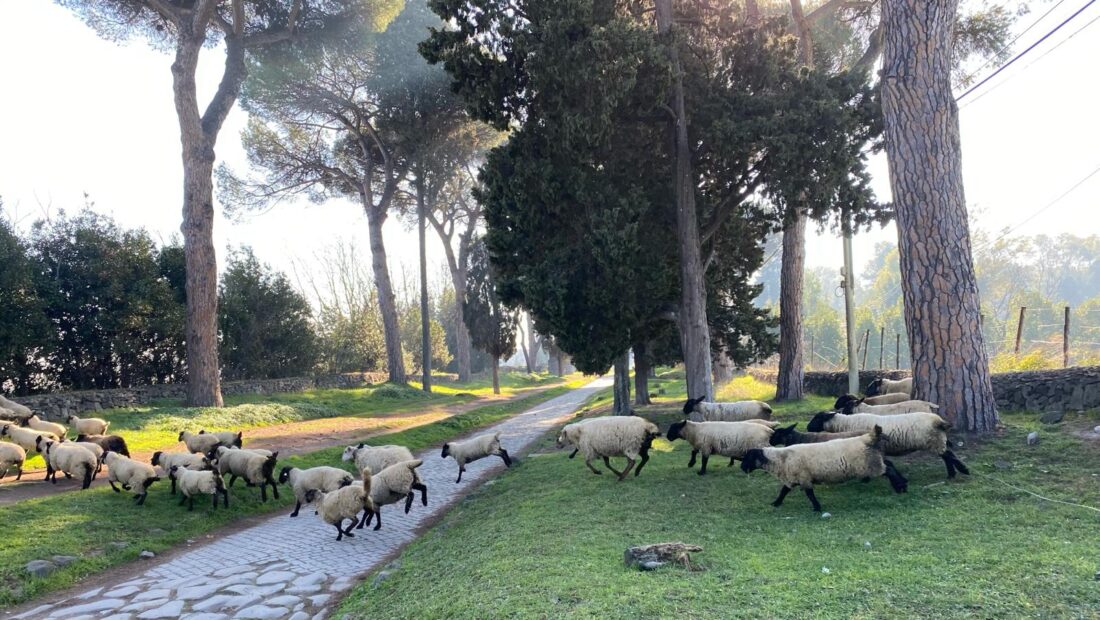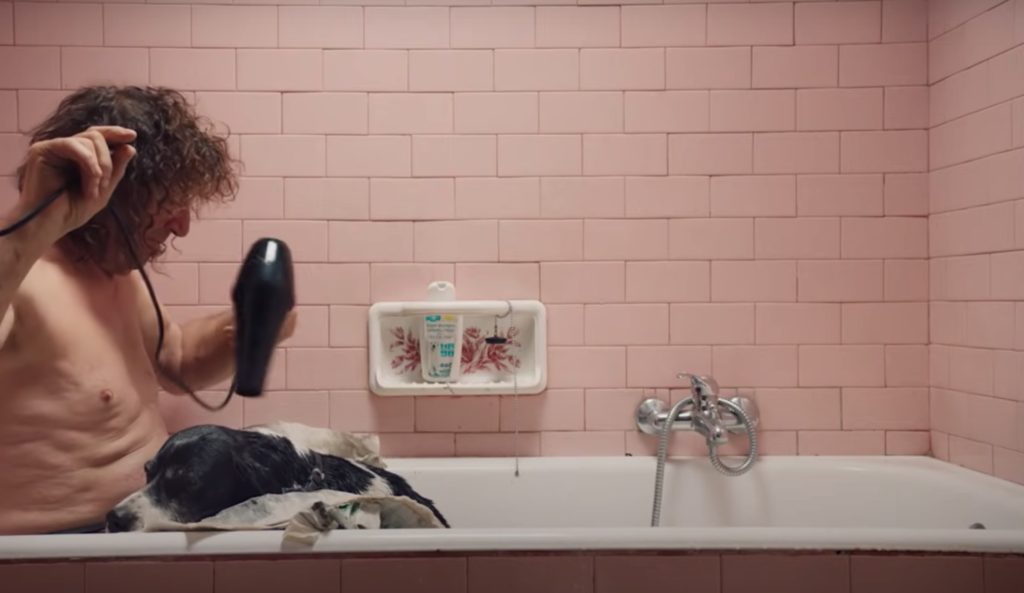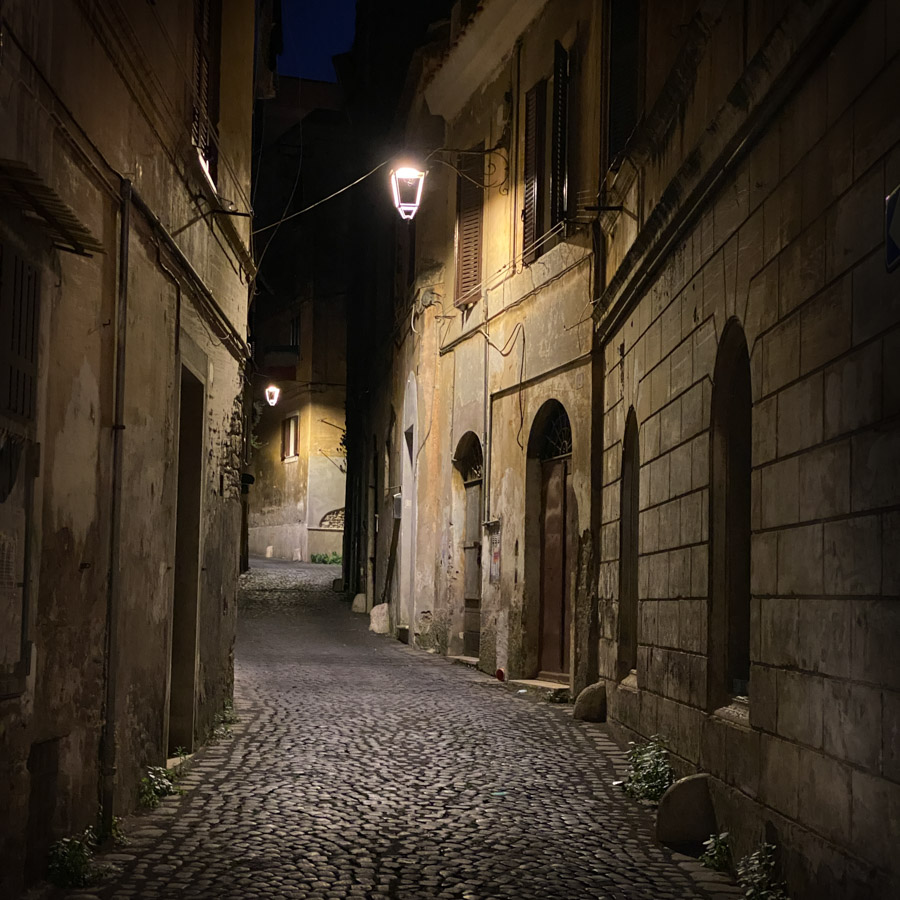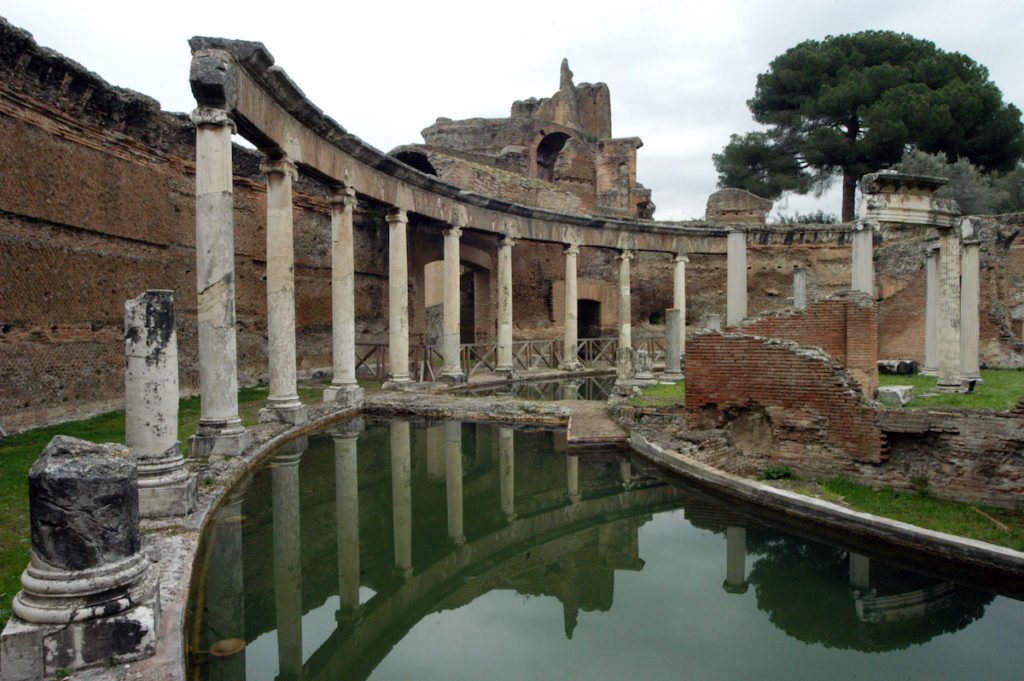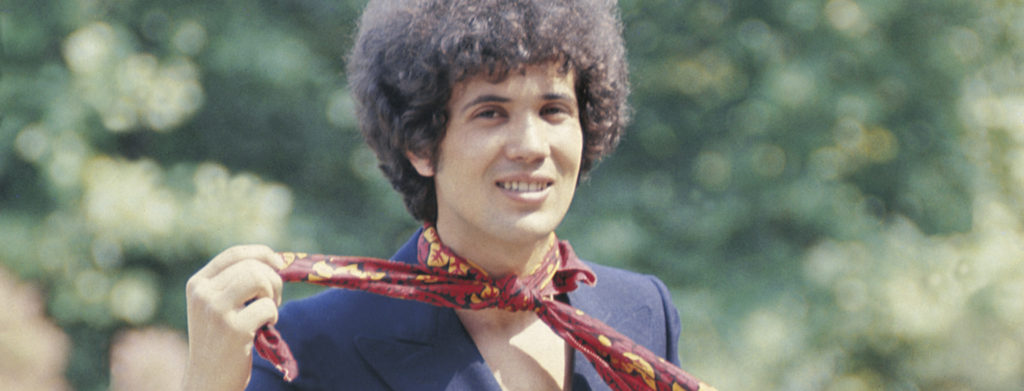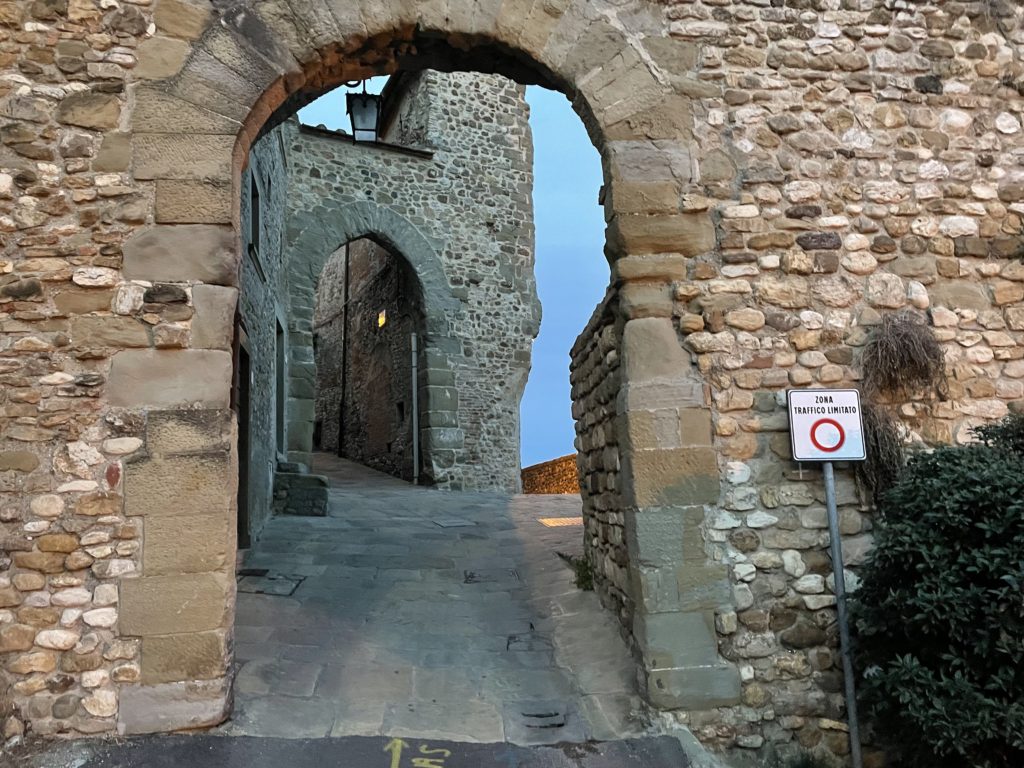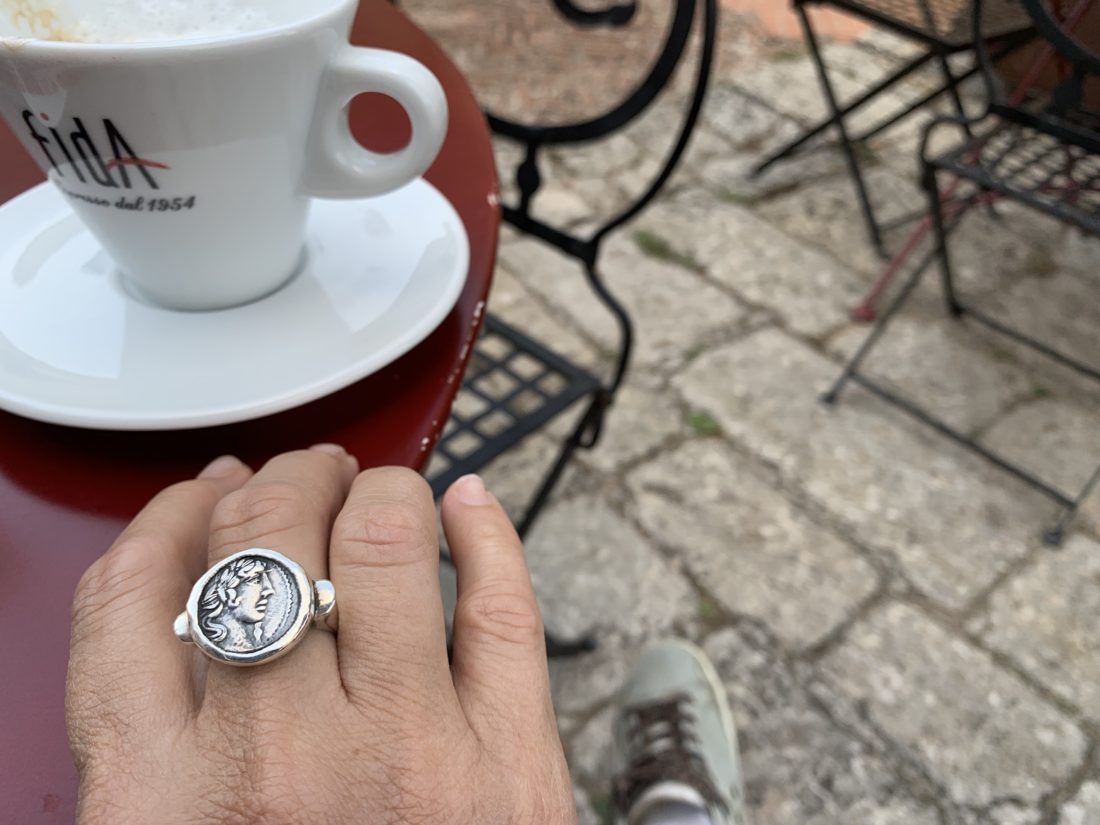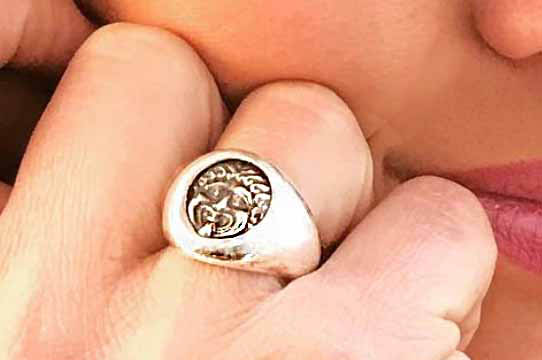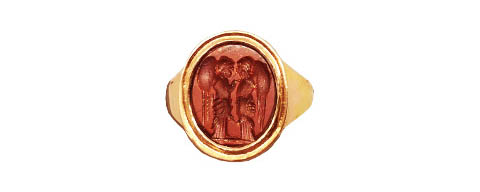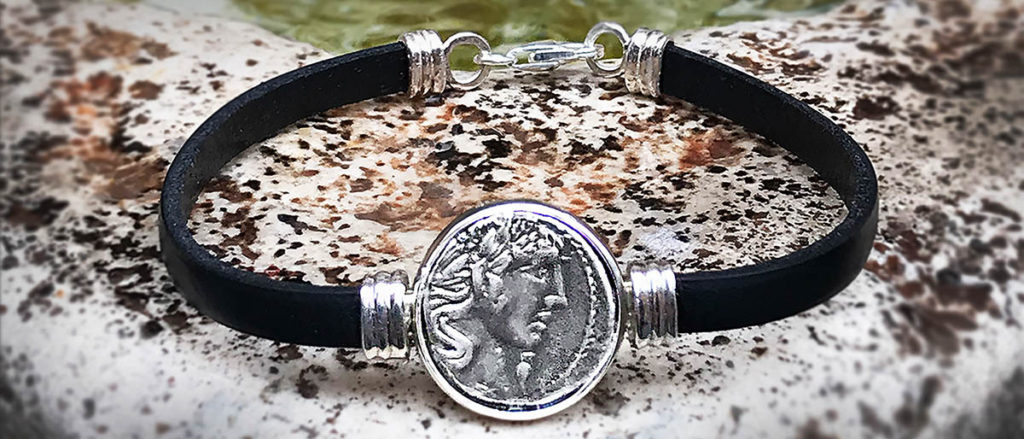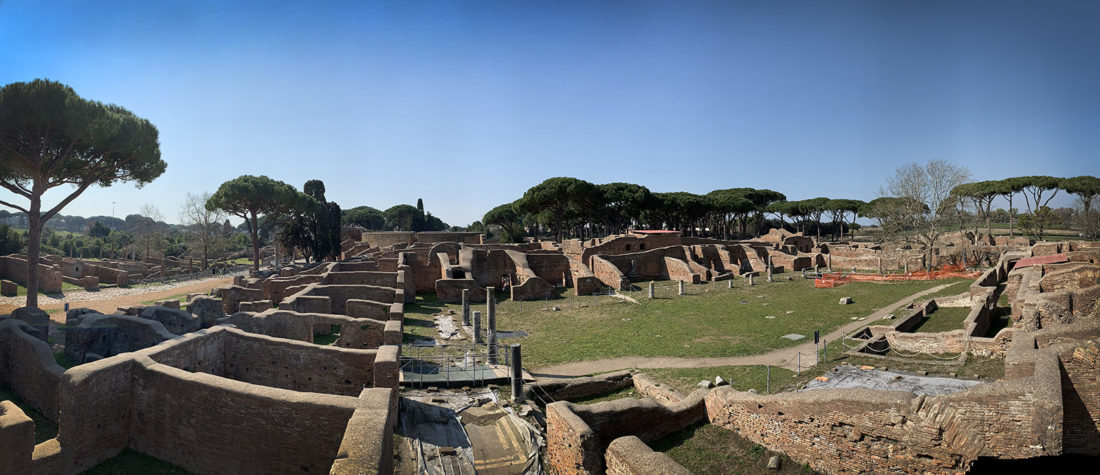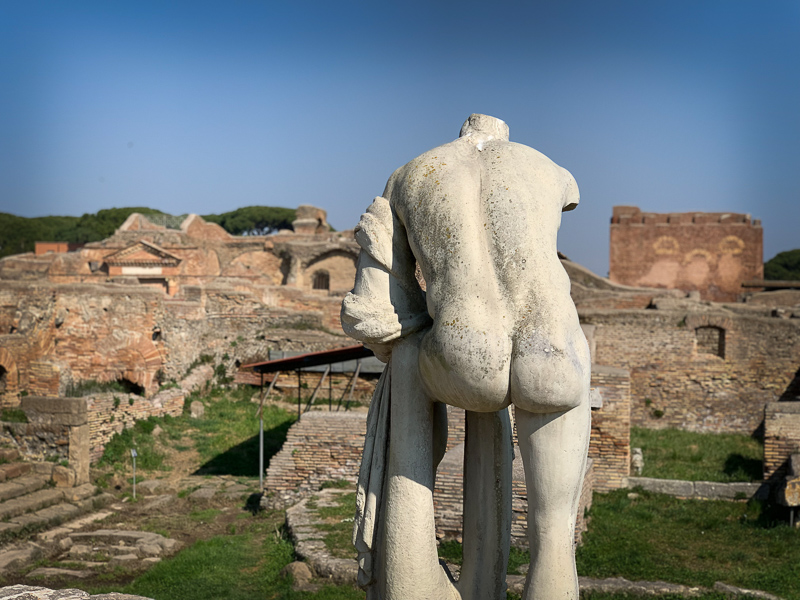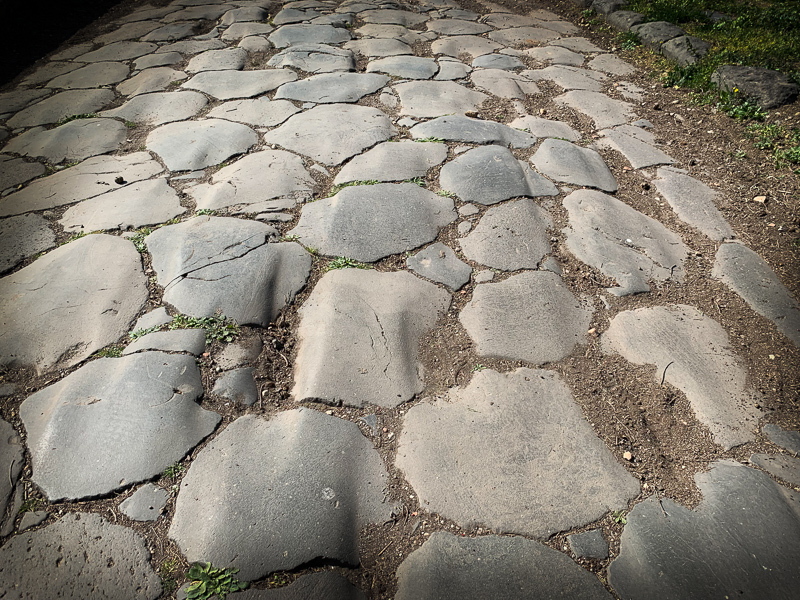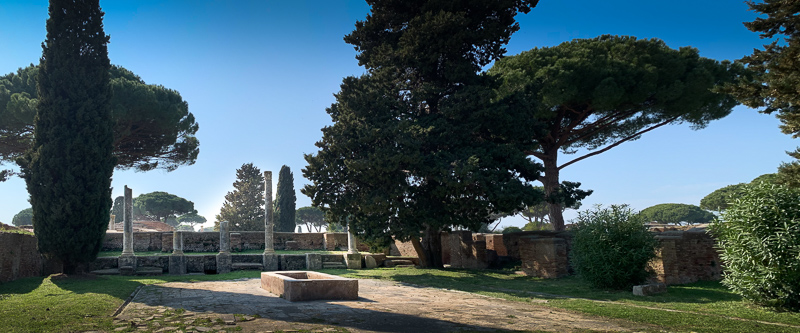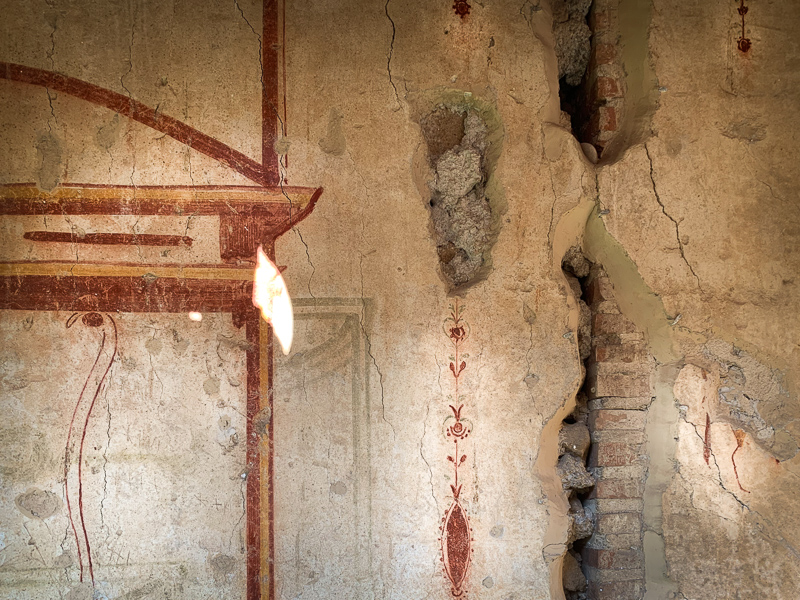Roman Treasures
Rome is slightly over an hour away from us by fast train, but it always feels like an exotic vacation, even on the briefest trips. In the last month I’ve gone for two overnight stays and found some special treasures—perfect after you’ve experienced the heavy-hitters like the Vatican, Forum, Pantheon, and Colosseum.
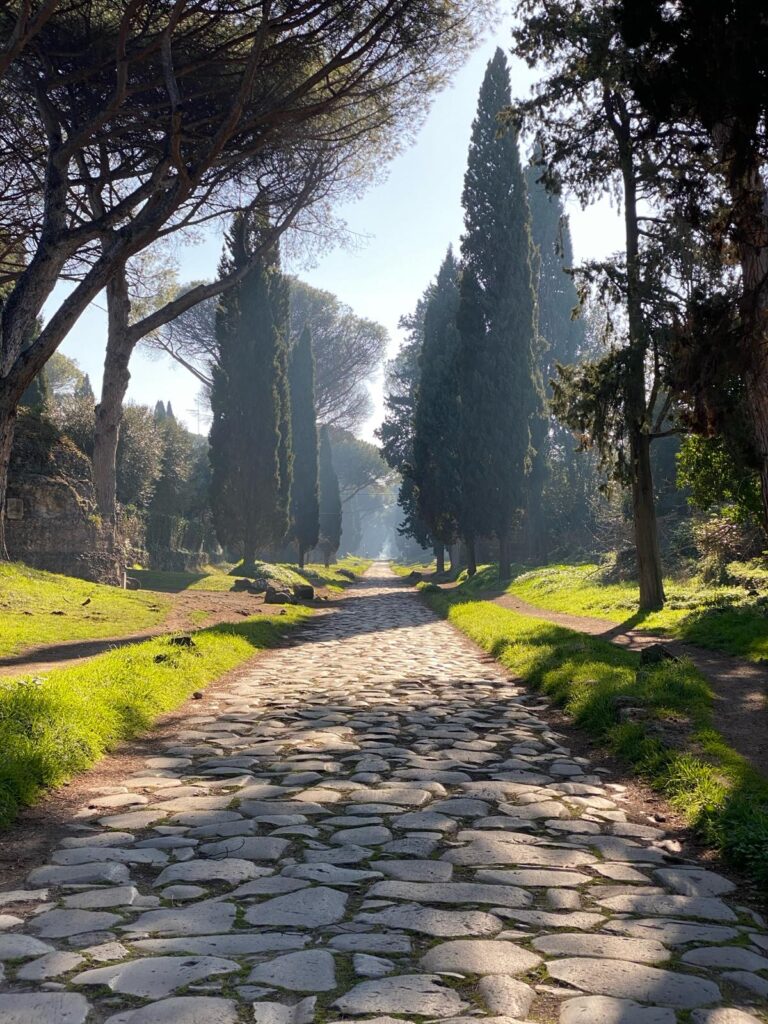
The Appian Way
The Via Appia Antica is in the running as the oldest paved road in existence. Begun in 312 BC, it was the first of the Roman superhighways created to move troops and materials—in this case 360 miles from Rome via Naples to Brindisi, an important port town where the Romans bumped up against the Greeks, and an intimidating military presence came in handy.
The most well-preserved section of eleven miles runs through the Appia Antica Archaeological Park, the second largest urban park in Europe. You can get there in fifteen minutes by taxi from central Rome. As I walked along the road paved with large basalt stones, still held in place by an early use of limestone cement, and showing wear tracks from cart wheels, it was impossible not to be swept up in history and natural beauty. This place is simply chock full of interesting things—several catacombs; Roman villas; a tomb of the daughter-in-law of ancient Rome’s richest man, converted in the 1300s to a fortified castle; aqueducts; and flocks of sheep. It was clearly the place to make your mark in Roman times.
We walked for about an hour from the Tomb of Caecilia Metella to the Villa of the Quintilii and were surprised by a flock of sheep running across the road in front of us at top speed. Caecilia’s large, round tomb from 30-10 BC was later incorporated into a walled castle in the early 1300s that is now only a shell. It was fascinating to see what it must have looked like—aided by an excellent VR-tour, complete with helmets—which I had to admit I liked despite my initial skepticism.
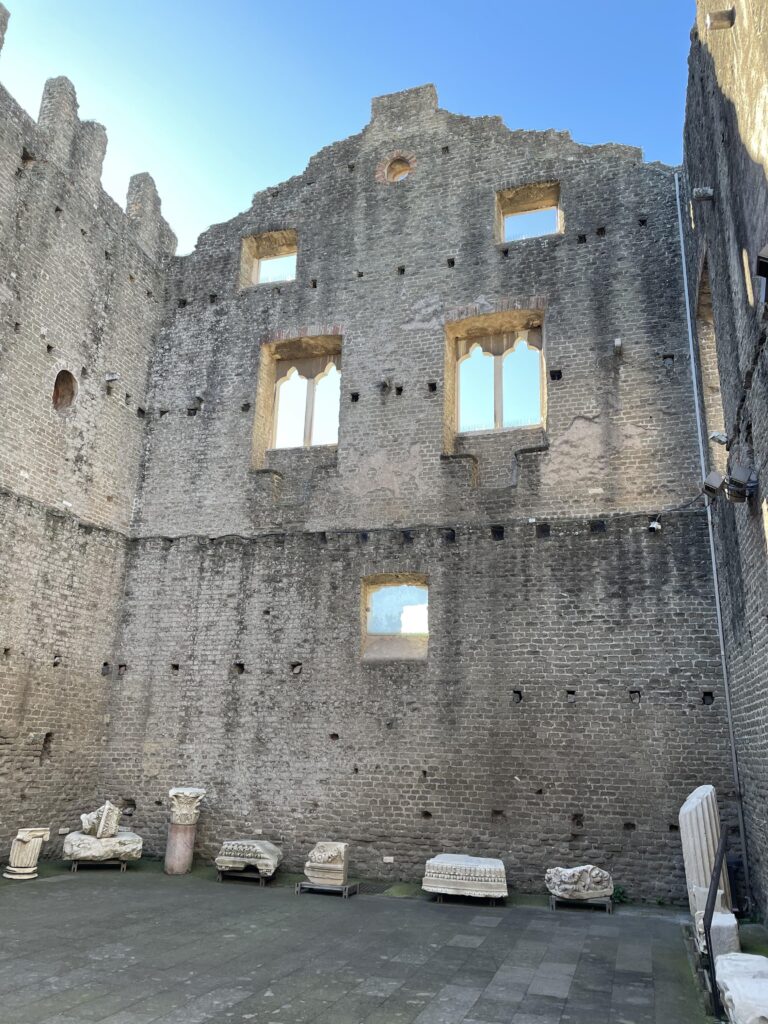
Unfortunately, due to a ticketing system hiccup, we didn’t get into the Villa Quintilii, but now have something left to explore. The villa is so large that at first the archeologists believed they were finding a whole town, not a single residence.
The walk itself was stunning. It’s the kind of place where we walked past Seneca’s Tomb and didn’t notice because there were so many things to see—realized it only later when looking at a map. Part of what made this adventure so special was that we were off-season so it wasn’t crowded or hot. The light was stunning with the sun low in the sky. Attempting this in high summer when it’s scalding hot would not be fun.
We had lunch at the Hostaria Antica Roma, a quirky place where the chef has recreated several dishes from the first cookbook in existence, written 2,000 years ago. There are also places to rent bicycles—a great way to explore more of the archeological park—which is enormous.
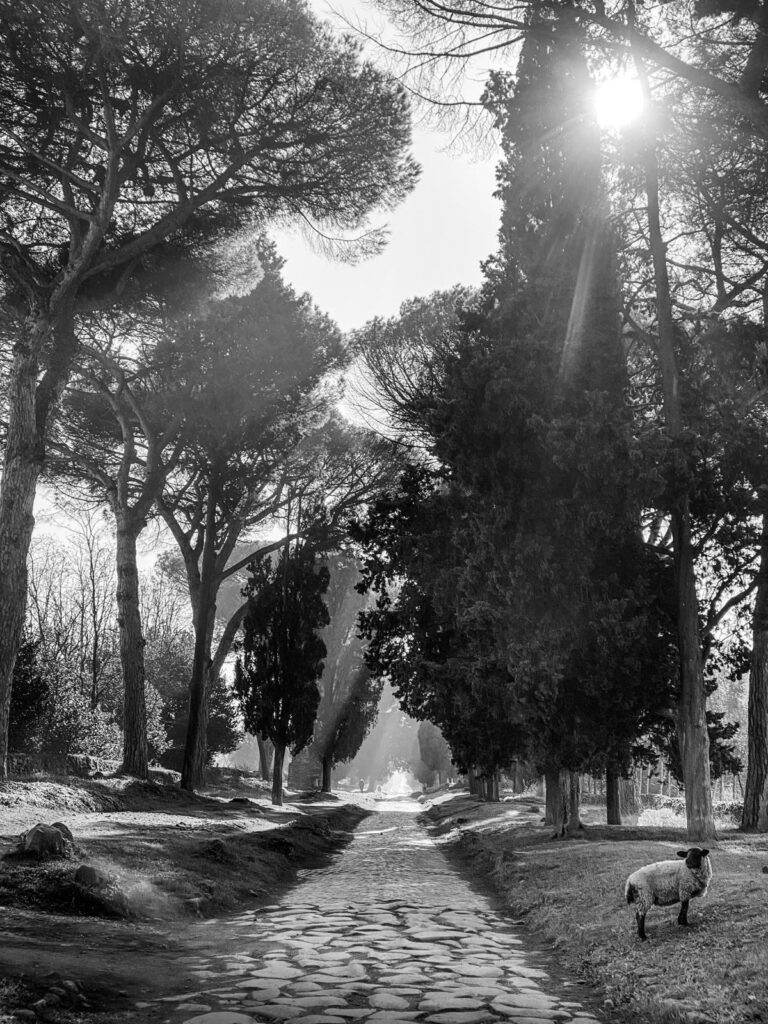
Domus Romane di Palazzo Valentini
Back in Rome, and next to Trajan’s Column is the Domus Romane di Palazzo Valentini. Discovered in 2005, when work was being done on the 16th-century Palazzo Valentini, workers discovered a well-preserved house, street, and part of another house from 400 AD, buried from 16 to 23 feet under the palace. These were homes of the rich and powerful. The tour wanders through the private bathing complex of the house consisting of plunging pools of various temperatures, a swimming pool, reception rooms, and the family’s private staircase—many walls still decorated with polychrome marble and painted frescoes. A street that used to run outside the house, and some rooms from the house next door are clearly visible. You can also see how the foundations for the Palazzo were put right through the Roman floors below.
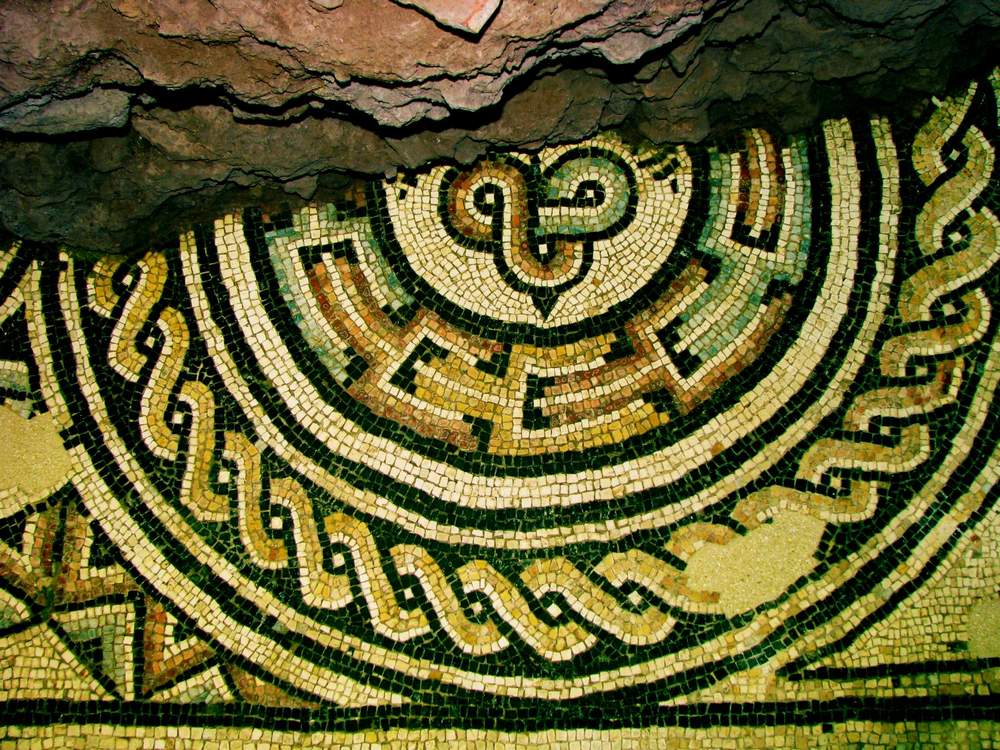
An earthquake in AD 538, and subsequent fire, seem to have partially destroyed the house. The scarred beams and earthquake cracks in the elaborate mosaic floors remain to tell the story.
Spaces for the tour are limited, so advanced booking is critical. An audio tour, in a range of languages, and projections on the walls of what the villa might have looked like help to bring this site to life. Morning tours are slightly longer and include an up-close look at Trajan’s Column.
Basilica di San Clemente
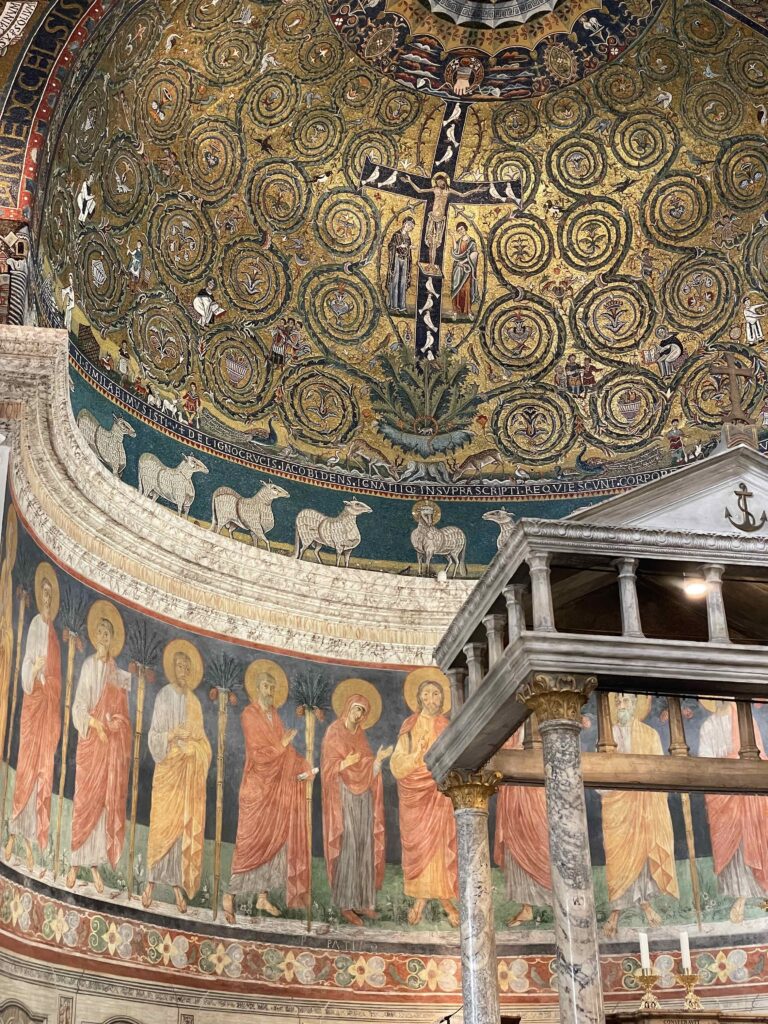
Almost in the shadow of the Colosseum is the Basilica of Saint Clement. The Basilica one sees today was built just before the year 1100, which is pretty amazing all by itself, but excavations revealed that the current structure was built on top of two older ones: a 4th-century basilica, and a 1st-century Roman home that housed a Mithraic temple, used for secret, early-Christian worship around 200 AD. I felt the layers of time as we climbed steep staircases down and down to the earliest structures, deep underground.
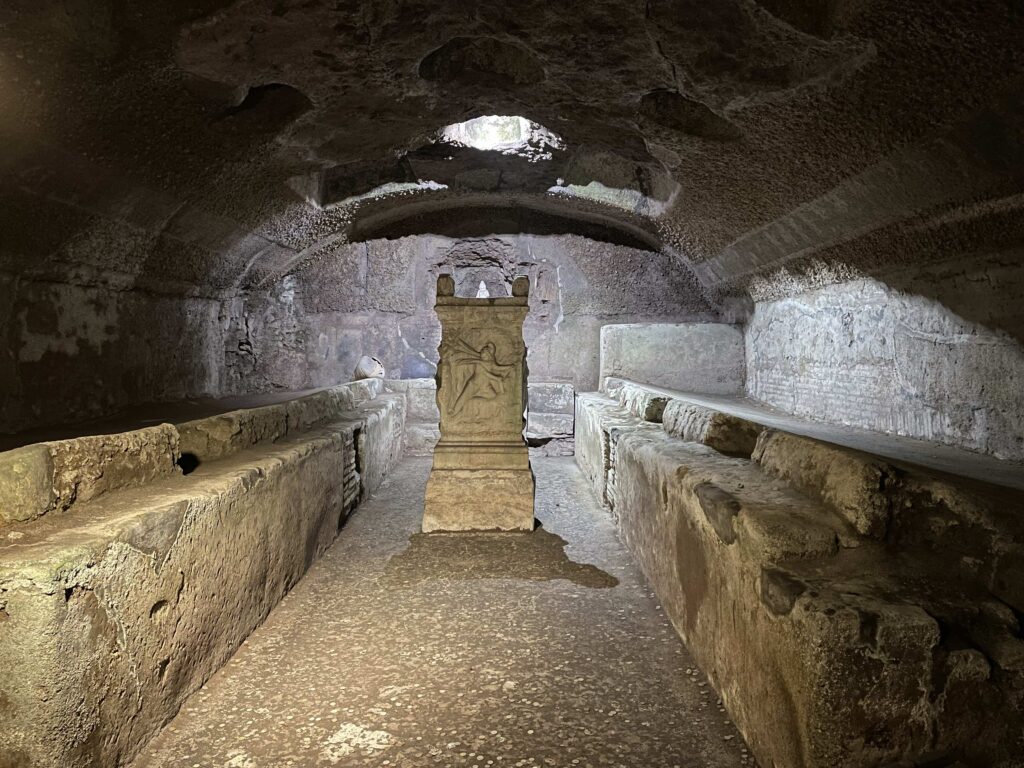
It’s moving to see these structures, still intact with their early-medieval wall paintings, columns and alters—as well as signs of earlier Republic buildings, like the Roman mint and an apartment block, separated by a street that’s clearly visible. At this period, the population of Rome was around 1,000,000 people so urban density was important. There were many five-story apartment buildings and multi-level houses for nobles.
This visit is less-structured than some of the others, and in some ways more intimate. We did book in advance (always critical), but because it was February, I was by myself on the lowest level—otherworldly and magical.
We had dinner at Hostaria Costanza, set into one tiny part of the massive walls of the Pompeo Theater, built in 61 BC. The setting would have been enough by itself, but the food was lovely, and the staff was smart, funny, and attentive. The kind of crew that noticed with amusement that as soon as we walked through the door Lola, our dog, found the location of the kitchen and was staring in that direction with her considerable focus and powers of persuasion.
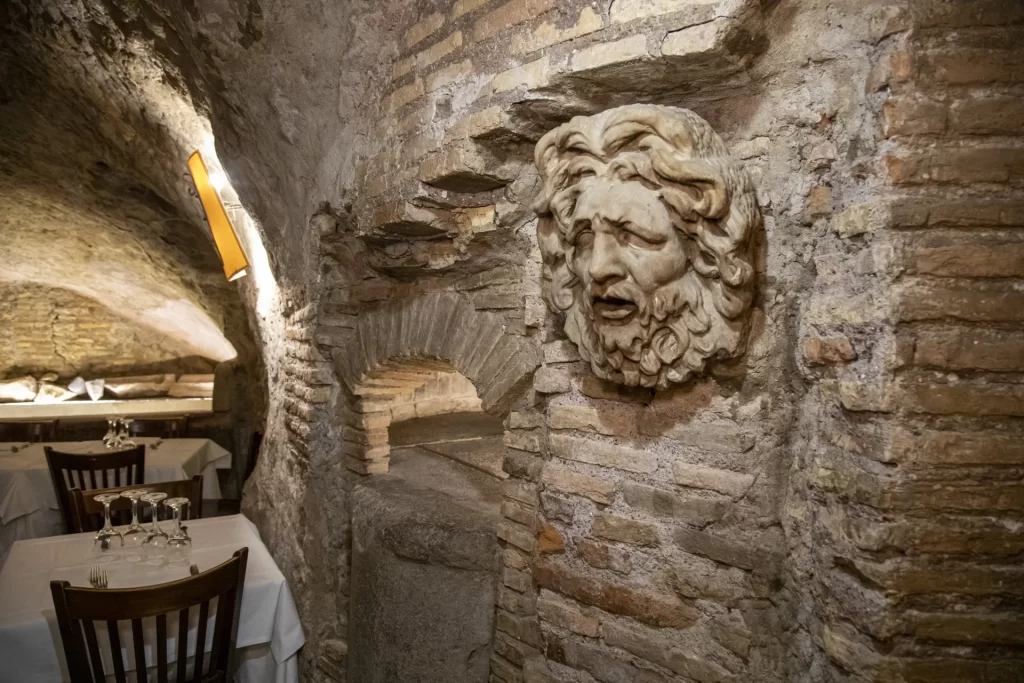
And don’t forget to visit another of my favorite archeological treasures in Rome, Ostia Antica.


